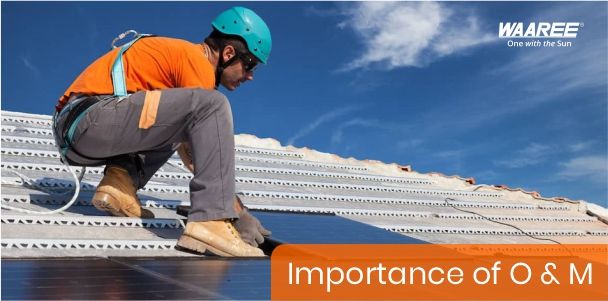






There are numerous options for advanced systems that supply and manage energy in commercial buildings and facilities these days. Because facility managers are concerned with the bottom line, it is recommended that they look beyond the type of energy supply system chosen and investigate demand-side management systems as well as maintenance methods used throughout the equipment lifecycle.
Focusing on high-quality operations and maintenance is the most effective and cost-efficient way to optimise a facility’s HVAC infrastructure, increase energy efficiency, and lower lifecycle costs (O & M). An O & M (operations and maintenance) program is an interconnected ecosystem of training, management, budgeting, maintenance, and business practices that work together to run a company.
It includes the day-to-day operational activities required for a facility to function and its employees to perform their duties. O & M refers to minor asset maintenance and care that necessitates in-depth technical knowledge of how that asset works. Corrective or reactive maintenance includes work that requires a highly skilled engineer or technician with specific knowledge of the equipment’s inner workings and design.
Operation management is critical in increasing business productivity. It oversees all aspects of production in order to maximise efficiency.
The operations administration ensures that O & M services are implemented and controlled effectively, including the curation of as-built drawings, equipment stocks, owner’s and operating manuals, and warranties. Curation involves not only maintaining an archive but also deciding what to keep; tracking down missing documents; preserving documents; keeping them up to date; and finally, archiving documents.
Keeping records of performance and O & M measures, preparing scopes of work and selection criteria for service providers, contracting with suppliers and service providers, paying invoices, preparing budgets, and securing funding and contingency plans for O & M services are all part of the administration. Compliance with regulations issued by the government or authorities with jurisdiction, as well as mandatory guidelines issued by utilities, is also part of the administration.
Ensures efficient, safe, and dependable process operations, including making cost/benefit decisions about maintenance actions, coordinating system operation with others, scheduling maintenance operations, inspecting work, and approving invoices. Meanwhile, operations include any day-to-day system operation to maximise power delivery, assess performance and trends, operate the grid interface, manage curtailments, or adjust settings like power factor or other ancillary services. Operations activities involving utility interaction or distribution-system integration/control are becoming increasingly important as individual plants grow in size and PV system penetration increases.
Specifies the rules and provisions necessary to ensure that maintenance is performed safely and efficiently, including the formalisation and enforcement of safety policies, including training for direct current (DC) and alternating current (AC) safety, rooftop safety, minimum staffing requirements, arc flash, and lockout/tag-out.
Additionally, it specifies the rules and provisions to ensure the maintenance work hours, site access, laydown areas, parking, and any other requirements under which work is performed. This includes confirming and enforcing service provider qualifications, as well as adhering to any environmental or facility-level policies governing the handling of controlled materials (e.g., solvents, weedkillers, insecticides).
Maintains the monitoring system and analyses the resulting data to keep track of system status, revenue metering, alarms, diagnostics, and security monitoring. This includes comparing system monitoring results to benchmark expectations and reporting to facility stakeholders, preparing reports on a regular basis as required by the O & M contract or the system owner, such as reports on plant performance, key performance indicators, problems, and maintenance services performed.
To prevent theft and vandalism, site security is performed both locally and remotely (e.g., cameras, intruder alarms).
Ensures that operator knowledge, training, and performance are sufficient to support safe and reliable plant operation. Electrical drawings, part specifications, manuals, performance data, and records all must be diligently kept and catalogued.
Maintenance is a vital feature of good assurance and, in some cases, determines a company’s long-term success. Instability can result from poorly maintained resources, which can cause a partial or complete halt in production. Most businesses can incur high costs as a result of malfunctioning machines or complete breakdowns.
This is similar to “operations administration” in that it ensures the effective implementation, control, and documentation of maintenance services and results.
Administration entails creating budgets and securing funds for preventive maintenance; creating reserves or lines of credit for corrective maintenance; planning services to avoid conflict with system operation or operations at the customer site; correspondence with customers; selection and contracting with service suppliers and equipment manufacturers; record keeping; warranty enforcement; providing feedback to new system designers; and reporting on system performance.
The operations function determines the scheduling and frequency of preventive maintenance, which is influenced by a variety of factors such as equipment type, site environmental conditions (e.g., marine, snow, pollen, humidity, dust, wildlife), and warranty terms. Scheduled maintenance is frequently performed at regular intervals to comply with manufacturer recommendations, as required by equipment warranties.
Repair or replacement of damaged or failed components is required. Some corrective maintenance tasks, such as inverter resets or communications resets, can be performed remotely. In addition, less urgent corrective maintenance tasks can be combined with planned preventive maintenance tasks.
Condition-based maintenance is the practice of using real-time data from data loggers to schedule preventive measures such as cleaning or to avert corrective maintenance problems by anticipating or detecting failures early.
Because condition-triggered measures are identical to preventive and corrective measures, they are not listed separately. Condition-based maintenance, on the other hand, influences when these measures take place, with the potential to reduce the frequency of preventive measures as well as the impacts and costs of corrective measures.
While there are numerous methods for organizing operations and maintenance tasks, Waaree does it all from a single, centralised platform. It provides sophisticated technologies for streamlining and optimising almost every aspect of operations and maintenance. This includes sophisticated tools for condition monitoring and predictive maintenance to help users get the most out of every part with confidence. Explore the Waaree website to learn more today!
Read More: AI Applications in O&M of PV Plants